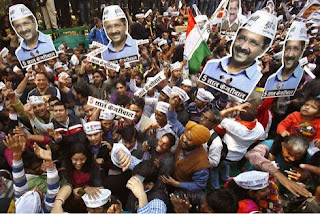Whenever an earthquake or tsunami takes thousands of innocent lives, a shocked world talks of little else.
In the wake of the massive disaster wreaked by nature on our Mother Earth, let us unearth a controversy that has probably skipped our attention.
With Nepal and its surrounding cities, still reeling under the aftershocks of the 7.9 richter quake, let's start preparing ourselves as to what are the best ways to escape injury and death in case a similar fury strikes us.
"Drop, cover, and hold under a table or desk" has been the gold standard recommendation, according to the American Red Cross.
Mr. Doug Copp, the Rescue Chief and Disaster Manager of American Rescue Team International (a private company not affiliated with the U.S. Government or other agency), has however challenged this dictum.
In his article, "Triangle of Life", he clearly states, that when buildings collapse, the weight of the ceilings falling upon the objects or furniture inside crushes them. However, it leaves a space or void next to them - NOT under them. This space is what is called the 'triangle of life'. The larger the object, the stronger, the less it will compact. The less the object compacts, the larger the void, the greater the probability that the person who is using this void for safety will not be injured.
1. Everyone who simply 'ducks and covers' under objects like desks, beds, sofas or cars when buildings collapse are crushed to death. The safest bet would be to lie next to these objects, not under them.
2.Curl up in a fetal position since chances of survival are more in a smaller void.
3. If you are in bed when earthquake strikes, just roll off the bed and lie down on the floor next to it.
4. Stay away from the doorways and avoid taking the stairs.
The American Red Cross has strongly refuted these observations made by Doug.
"These recommendations are inaccurate for application in the United States and inconsistent with information developed through earthquake research. Mr. Copp based his statements on observations of damage to buildings after an earthquake in Turkey", they have retorted. "Building construction standards, techniques, engineering principles, and construction materials in Turkey and the United States are incomparable", they further say.
In fact the Red Cross advises against moving out of bed for fear of causing damage to oneself by the debris on the floor. Also, trying to escape during the shaking of earthquake could be far more dangerous especially if the distance is long since there is always a risk of tripping and getting injured by broken floors, walls and objects in the path of escape.
The debate could rage on and on. However, it would be wise to conclude it on this note that since very few buildings collapse or "pancake" in the U.S. as they might do in other countries, the Red Cross recommendation - "Drop, Cover, and Hold On"; are best suited for the developed nations whose infrastructure is similar to the U.S. and the "Triangle of Life" may indeed be the best thing to teach in other lesser developed countries where the risk of building collapse, even in moderate earthquakes, is great.
A famous English author once quoted, "I got quite annoyed after the Haiti earthquake. A baby was taken from the wreckage and people said it was a miracle. It would have been a miracle had God stopped the earthquake. More wonderful was that a load of evolved monkeys got together to save the life of a child that wasn't theirs."










